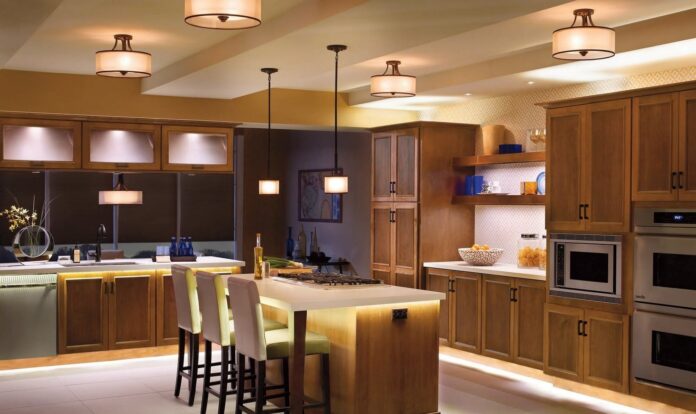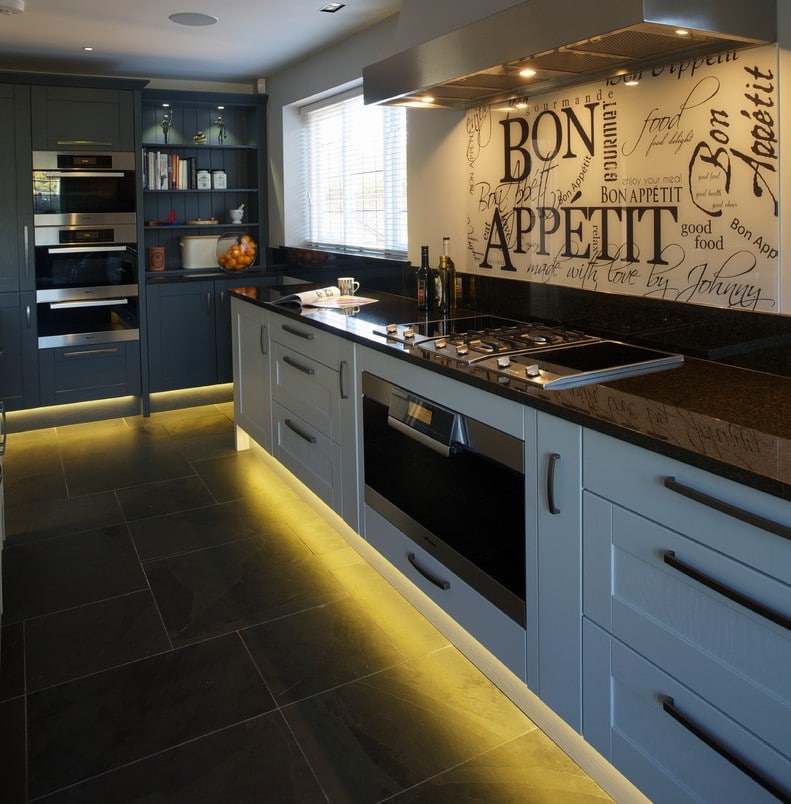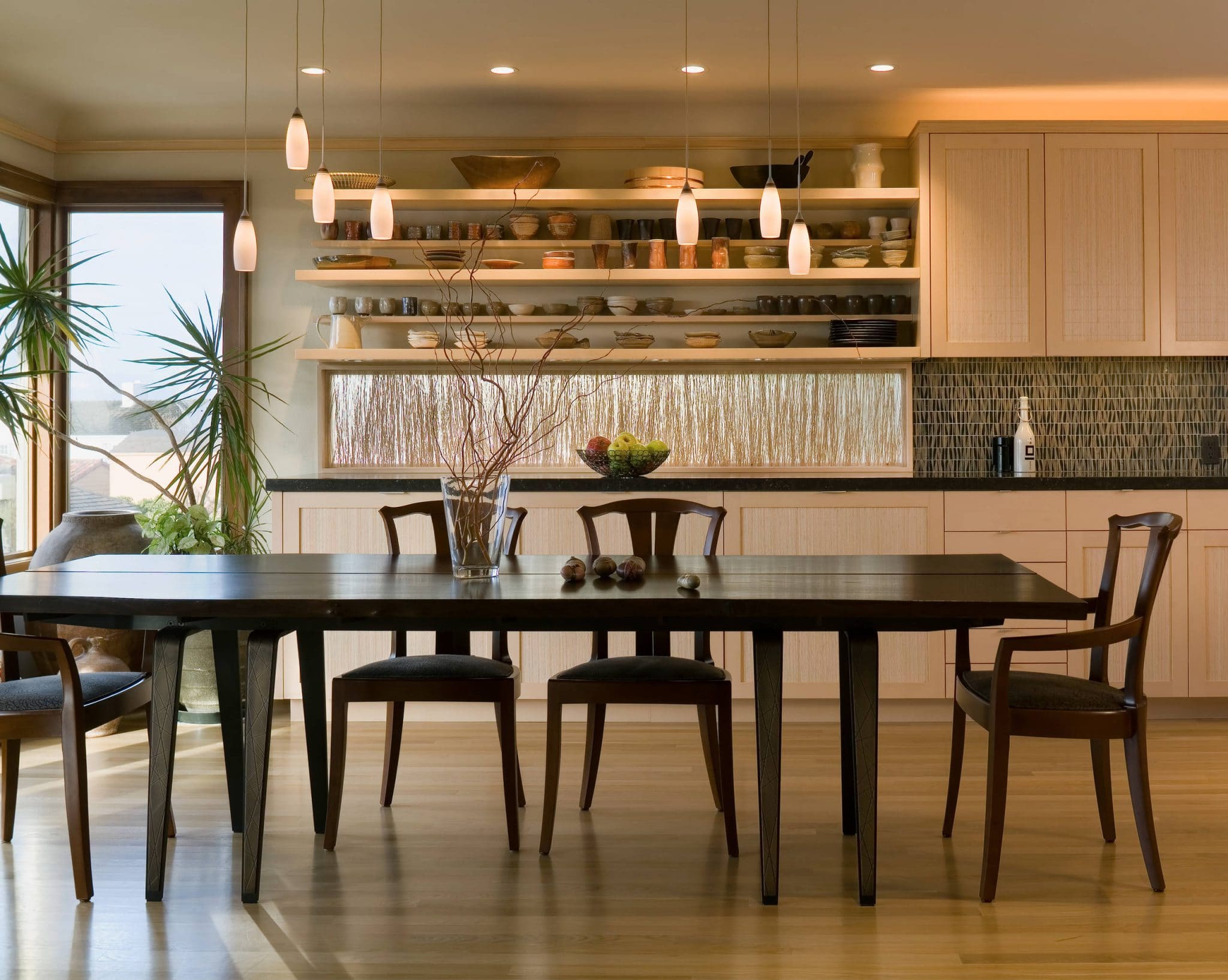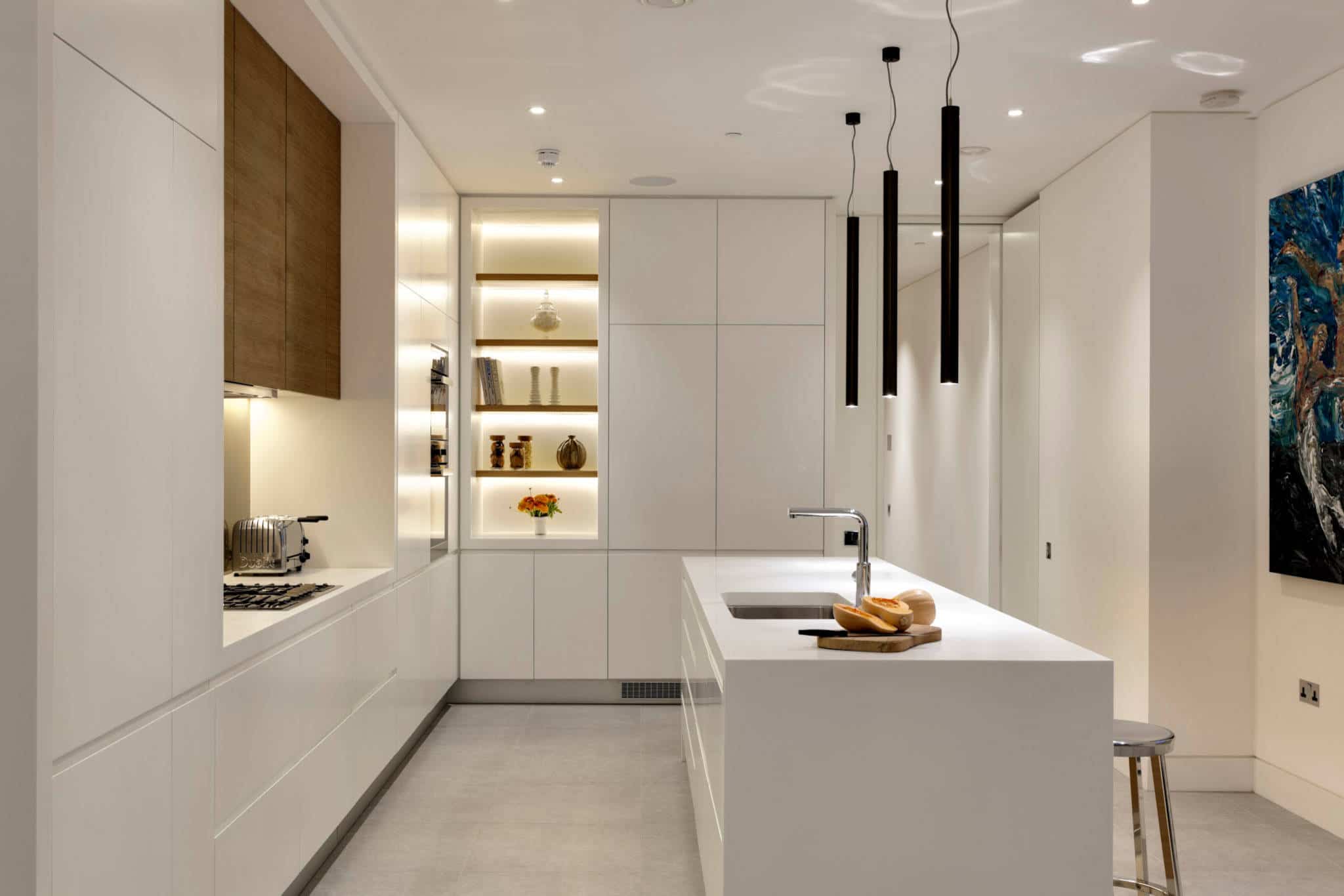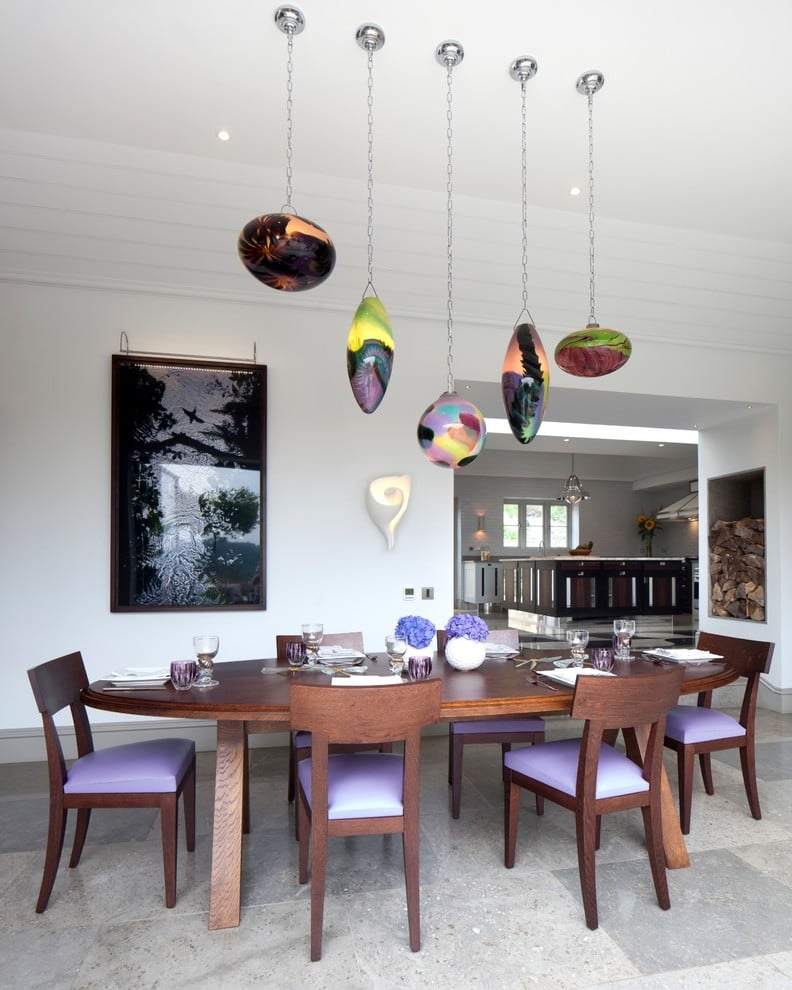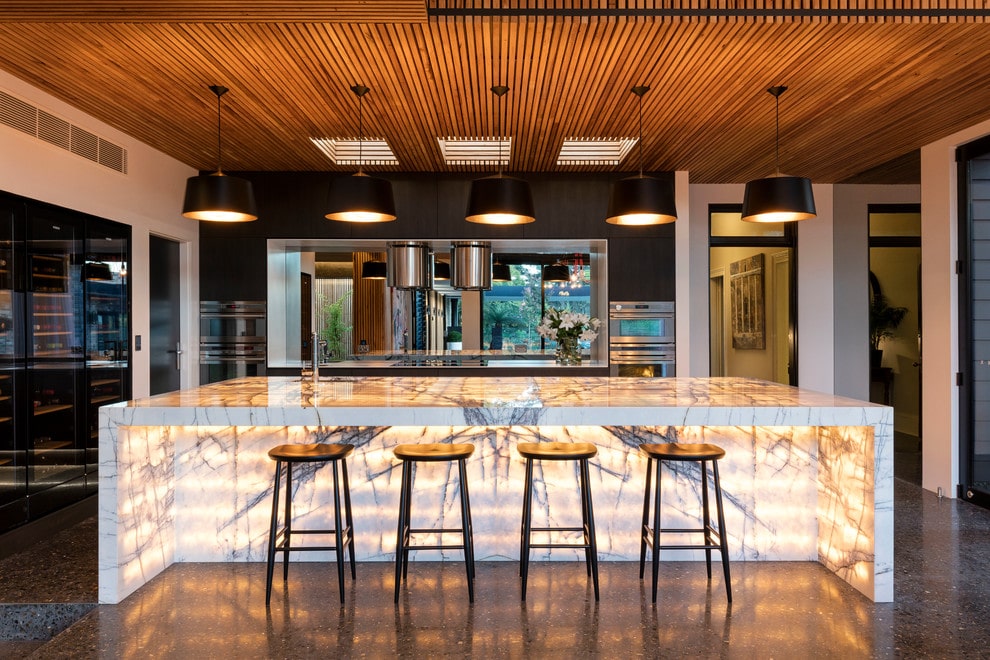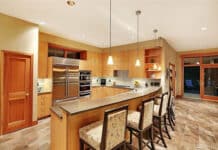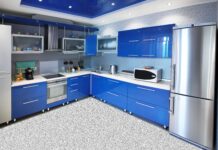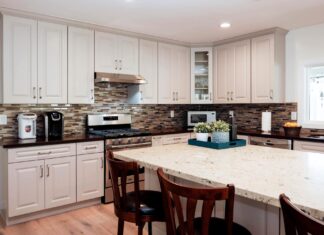A lighting plan should be considered an important aspect that requires attention to detail, just as any other element of a kitchen remodel.
Oddly enough, lighting is usually the last thing considered in a new kitchen design and the first to be cut when the budget gets tight.
The truth is, nearly everyone with a little home improvement experience knows that a kitchen will not look great or 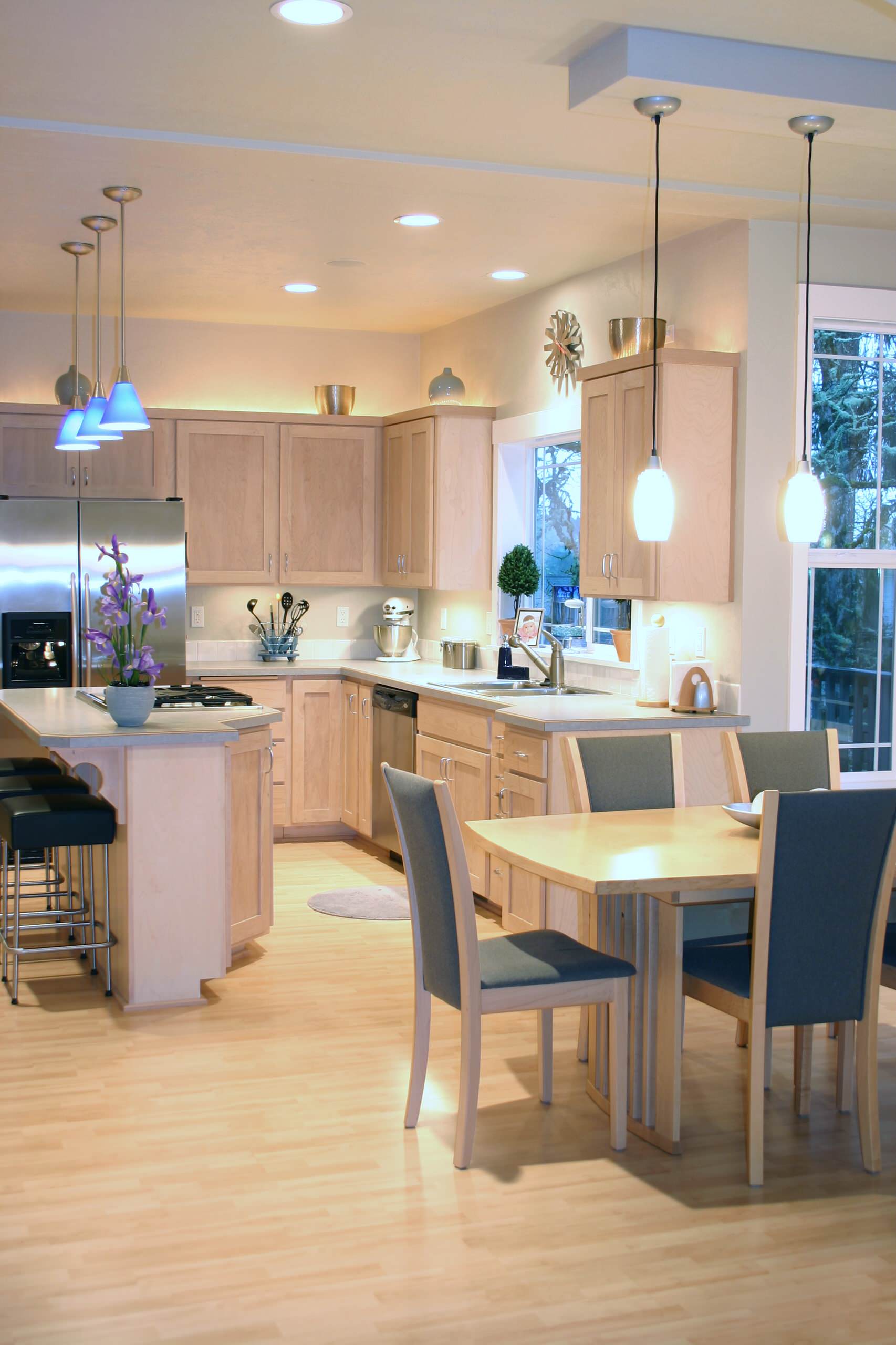
There’s much involved, certainly beyond the specification of certain stylish fixtures.
An effective plan tastefully blends the light from different sources to create a room in which its architectural and decorative details are tastefully revealed.
You certainly do not want to attempt to light the entire kitchen with a single ceiling-mounted fixture (unless, perhaps, you live in a small apartment).
All that serves to provide is an overbearing glare that saturates the space in an unflattering manner. Even recessed lighting isn’t much of an improvement, whether it is installed in a generic grid or not.
Sadly, kitchen lighting is often approached incorrectly, creating too much light in certain areas and shrouds of shadows in others.
Novice decorators are unable to articulate the imagery they’re looking for, which is often a layered look.
It is impossible for all the necessary light a kitchen needs to be provided by one source.
In fact, a kitchen that is lit ideally layers and blends FOUR distinct kinds of light. This subject has been researched and refined over years.
4 Main Types of Lighting
Task Lighting
Task lighting is the most important light source, providing ample illumination for kitchen routines such as reading recipes or prepping food.
When placed just right, the light is situated between a person’s head and the work surface. Thus, lighting below the upper cabinets becomes particularly effective. If you have or are adding a pantry, you’ll also want to extend task lighting to it.
Ambient Lighting
Ambient lighting, characterized by a warm glow, may soften shadows and help create an instantly welcoming atmosphere. When cabinets do not extend to the ceiling, the open space is ideal for ambient light. Of the four types, this one is most commonly neglected.
Accent Lighting
This is the source of added depth and dimension to a kitchen. You may have noticed accent lighting used as fixtures set inside glass-front cabinets to spotlight fine china, glassware, or any number of collectibles.
Recessed adjustable low-voltage fixtures designed to highlight art also create this effect.
Decorative Lighting
There’s so much you can do with clever lighting. You can add a dazzling image to any space. It can complement or even add to the architecture by adding an intended style in which light is blended in a specific manner.
The perfect lighting setup includes dimmers for task, ambient, accent, and decorative lighting. The ability to adjust the light level in any room – not just the kitchen – is preferable.
With all the work of preparation and cleanup before and after a meal, you need a bright space to make the entire process a bit easier.
Obviously, during a meal, you can determine just how intimate you want the atmosphere to be by dimming the light to the perfect level. Ideally, you want multiple dimmers in the kitchen. The results are spectacular, and the possibilities are endless.
If you’re truly serious about being hands-on and making maximum use of light, consider hiring a lighting designer. If you already have a remodeling team, it’s a no-brainer.
A specialist will analyze the kitchen layout, consider its design elements, factor in specifics such as ceiling height, natural light, and surface finishes (and gauge their shine), and ultimately determine the amount, placement, and strategy of space lighting.
Can’t afford a designer? Check out the endless resources available online or in how-to books.
If you are still undecided about what specific lighting approaches you want to take during a remodel, look to have at least three junction boxes installed. This will allow you the freedom to add whatever fixtures you finally decide upon later.
Having a perfectly lit kitchen not only creates a great atmosphere, but ideally, it offers options to adjust the lighting style to accommodate any occasion.

